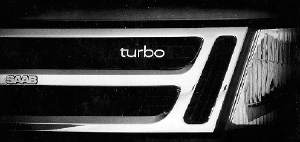
 New Technoloqy Includes Innovative Direct Ignition System:
An Intellient Advance For The Most Intelligent Car
New Technoloqy Includes Innovative Direct Ignition System:
An Intellient Advance For The Most Intelligent Car
Ever-tightening auto emissions standards and the simultaneous quest for improved fuel economy and performance have stimulated automotive engineers to more technological advances in the last ten years than the car has seen in the past one hundred. However, despite computerization and other engine electronic wizardry, until now, little has been done in the area of ignition system development.
Engineers have been struggling to create systems that produce sparks powerful enough to fully ignite today's carefully metered fuel/air mixtures while keeping the necessary underhood voltages to safe and manageable levels. The high voltages needed for proper combustion, in turn, have created the potential for voltage leaks at ignition coils, distributors and spark-plug wires. This has caused problems with driveability due to misfire as well as large amounts of unwanted electrical interference. Such interference not only causes poor radio reception, it can also create havoc for other underhood electronic components, such as engine management microprocessors.
Saab has solved these ignition shortfalls with their new patented Direct Ignition system, found on all 1990 9000 Turbos.
A team of engineers, headed by Per Gillbrand, who developed Saab's unique Automatic Performance Control (APC) for turbocharged engines, has created an ignition system that features individual compact ignition coils for each spark plug and no distributor or high-tension ignition wires. All of the high-voltage components are encased in an alloy cartridge that sits atop the cylinder head between the camshaft covers.
The totally insulated individual coils supply their spark plugs with a powerful 40,000 volts at the moment of ignition, enough to ensure thorough combustion for optimum performance, fuel economy and minimal emissions. The wires connecting the cartridge to the electronic control unit carry only 12 volts, which guarantees no voltage leaks for smooth running and no radio interference. The result of this engineering masterpiece, which is exclusive to Saab in its capacitive form, is a five horsepower advantage.
Continuous Optimum Ignition Timing
A microprocessor controls ignition timing based on engine speed and piston position information it receives from a crankshaft sensor (accurate to within 0.5 degree, plus or minus) as well as engine load information it gets from a manifold pressure sensor and the inception of detonation from a knock sensor. The microprocessor instructs the appropriate coil to fire at the optimum moment. This use of a microprocessor and individual ignition coils actually permits constantly variable ignition timing from cylinder to cylinder, even within the same revolution of the engine.
Optimum Combustion
The coils themselves are of a new, small design. They are powerful enough to step up the signal they receive to 40,000 volts to fire the spark plug. The voltage increase is done in two stages, first to 400 volts, which is stored in a capacitor. Then, at the instruction of the microprocessor, the voltage is upped to 40,000 volts for ignition.
With Saab's cross-flow, four-valve-per-cylinder, alloy head design, the spark plug is placed centrally in the combustion chamber. The shape of the combustion chamber, combined with the powerful spark, ensures optimum combustion for efficient use of fuel, even in the high pressure environment of a turbocharged engine.
The use of a microprocessor to initiate the spark further enhances reliability life over other distributorless ignition systems since the spark plugs in Saab's Direct Ignition System each fire only during the compression stroke of the engine.
Leakproof
With the ignition coils attached directly to the spark plugs and all of the high voltage components mounted in a special alloy container atop the cylinder head, the chance for voltage leaks is virtually eliminated, as through worn spark plug wires or slight cracks in a distributor cap or insulation. The alloy container and the cylinder head itself serve as more than ample insulation; there is no danger of electric shock for technicians by touching the system's cover while the engine is running. The ignition system's container is so designed that when unbolted for removal, the four ignition coils release their grips on the spark plugs.
Weatherproof
Since there is no distributor cap, spark-plug wires, or exposed spark-plug cover boots, there is virtually no chance for ignition misfire due to voltage leaks, regardless of conditions. There are fewer reliability concerns as well, since there are no mechanical parts to wear. In addition, thanks to the multiplicity of ignition coils, the failure of a coil does not prevent the car from being driven. There's a "limp-home' mode in the microprocessor that allows the car to still be driven if there is an electronic failure in the system.
To ensure easy starts, the Saab DI has a multi-spark function. When the ignition key is first turned, each spark plug, in turn, is fired about 50 times in a fraction of a second. This rapid-fire discharge cleans and dries the spark plug electrodes to aid starting. If the engine fails to start, the system is programmed to give all the plugs a simultaneous blast of about 1,000 sparks, after the driver releases and then retries the ignition key. Once the engine has started and is idling at at least 600 rpm, the system operates in its normal, one-spark-per-cycle mode.
 |
 |
 |
 |
 |
